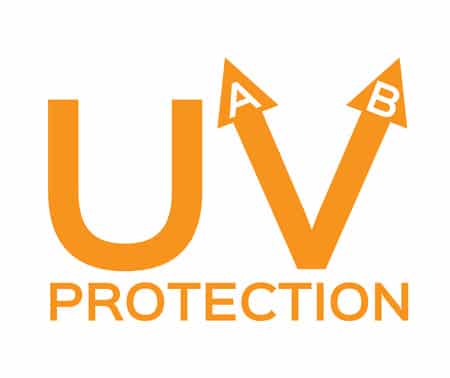What’s UPF?

It’s that time of year where the blistering sun drives us to the shores and sport fishing or a bonfire on the beach sounds ideal. Days run into nights as we revel in the long days of summer and its warmth. We are well aware of how to prevent sunburns by slathering sunscreen onto our skin. But a very simple method can add an extra layer of protection that you may have been unaware of.
Our common knowledge of SPF comes from our relationship with sunblock lotions. The acronym stands for Sun Protection Factor. But there is another method of measuring harmful rays and that is with the Ultraviolet Protection Factor. Both SPF & UPF rating systems determine how long one can be in the sun before getting burned, but there are major differences between the two.
 SPF uses humans to take measurements of a sunscreen’s effectiveness and works counterintuitively. The person has to know how sensitive their skin is before they can look confidently at the SPF label to determine its effectiveness. The timeframe of protection is fairly generalized as the ratio of when it was applied to the activities performed varies from person to person. So a general rule of thumb is: if it takes 10 minutes to burn in the sun without sunscreen, then wearing an SPF 15 will allow you 150 minutes in the sun before you get burned. But using an SPF30 does not mean you are doubling the allowed amount of exposure. Factor in skin type, sweating, or water activities, the defense time may be greatly reduced. Although many brands tout broad spectrum protection, sunblock lotions mostly deflect ultraviolet B radiation as companies don’t have a precise way to measure UVA protection directly from the skin.
SPF uses humans to take measurements of a sunscreen’s effectiveness and works counterintuitively. The person has to know how sensitive their skin is before they can look confidently at the SPF label to determine its effectiveness. The timeframe of protection is fairly generalized as the ratio of when it was applied to the activities performed varies from person to person. So a general rule of thumb is: if it takes 10 minutes to burn in the sun without sunscreen, then wearing an SPF 15 will allow you 150 minutes in the sun before you get burned. But using an SPF30 does not mean you are doubling the allowed amount of exposure. Factor in skin type, sweating, or water activities, the defense time may be greatly reduced. Although many brands tout broad spectrum protection, sunblock lotions mostly deflect ultraviolet B radiation as companies don’t have a precise way to measure UVA protection directly from the skin.
On the other hand, the UPF measuring system is specifically used to measure your clothes’ ability to protect you from both UVA and UVB rays. No human guinea pigs are involved as a legitimate piece of equipment, called a spectrophotometer, is used to measure how much of the sun’s radiation is absorbed/blocked by the fabric. Clothing is actually one of the best forms of sun protection as it doesn’t wash away or need reapplication. There are ways to boost the protective powers of your clothing without actually buying UPF treated clothing. Tighter woven fabrics will block out more of the sun’s rays. You can do a comparison by holding pieces of fabric against a light source by literally observing which fabric lets through the most light. Textiles such as silk and polyester will have a higher UPF than something like nylon or knits. The darker and heavier the fabric yields better results as the tension in these is stronger and will not let the rays pass through as easily. Even 100% cotton shirts improve after laundering as the fibers shrink closer together to create more of that close-fitting tension..
This heather grey, long sleeved, poly blend shirt is ideal for extended protection as it hits the factors of getting a higher UPF from your clothing. You can take it a step further by washing your clothes with detergent that includes optical brightening agents which further deflect harmful rays. The amazing thing about polyester and UPF is that the protection increases when wet but fabrics like cotton decrease in effectiveness. Be wary of what you’re wearing. A little forethought may save you from a sunburnt summer.